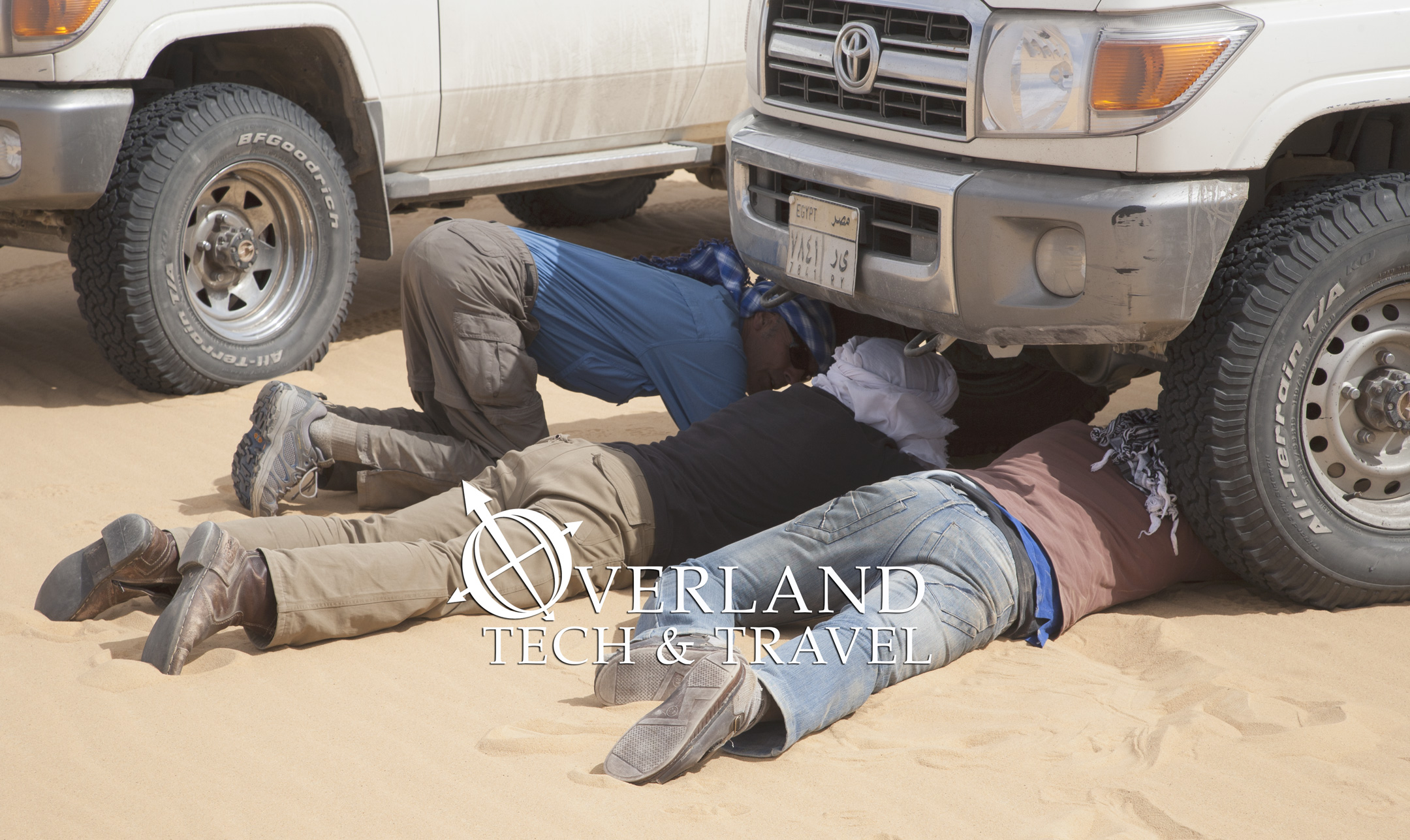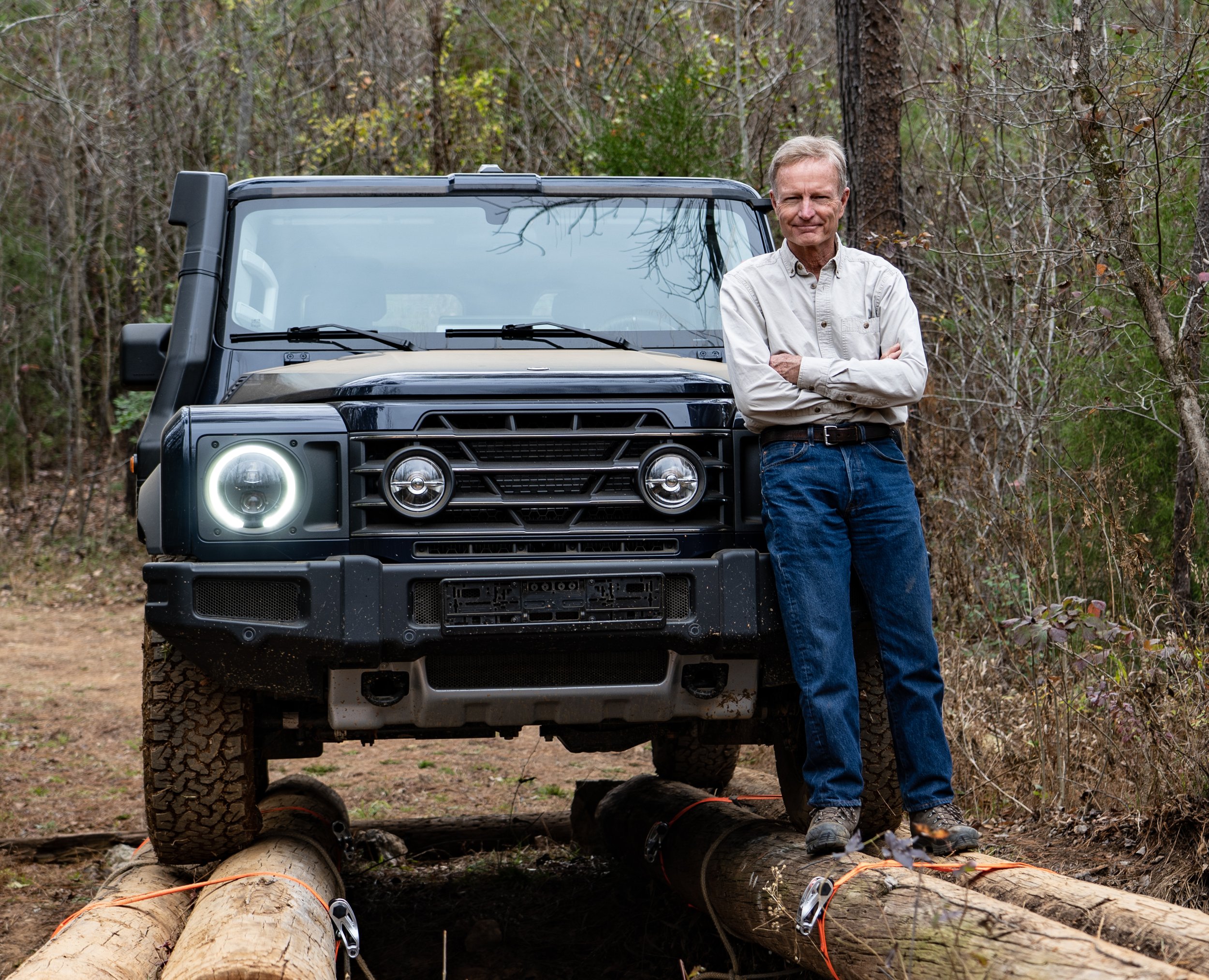
Overland Tech and Travel
Advice from the world's
most experienced overlanders
tests, reviews, opinion, and more
Equipment review: Viking Off Road Recovery Bag $130
 I wrote a brief review of Thor Jonsson’s stout U.S.-made Recovery Bag when I was with Overland Journal, but since then I’ve had more experience with it in the field. Nothing I’ve seen has altered my initial impressions of its quality and utility.
I wrote a brief review of Thor Jonsson’s stout U.S.-made Recovery Bag when I was with Overland Journal, but since then I’ve had more experience with it in the field. Nothing I’ve seen has altered my initial impressions of its quality and utility.If your vehicle is equipped with a winch designed for anything but pure poseurship, you need a comprehensive recovery kit to accompany it. A winch doesn’t work in isolation: If you’re winching from a tree you must use a tree saver strap to prevent damage to the trunk that could kill the tree; if you’re attaching to another vehicle you need proper shackles. In many situations you’ll want a pulley block to redirect a pull or increase power. Gloves, a winchline extension, a KERR (kinetic energy recovery rope) or strap, a winchline damper—all should be part of a winch kit.
 I wrote a brief review of Thor Jonsson’s stout U.S.-made Recovery Bag when I was with Overland Journal, but since then I’ve had more experience with it in the field. Nothing I’ve seen has altered my initial impressions of its quality and utility.
I wrote a brief review of Thor Jonsson’s stout U.S.-made Recovery Bag when I was with Overland Journal, but since then I’ve had more experience with it in the field. Nothing I’ve seen has altered my initial impressions of its quality and utility.
If your vehicle is equipped with a winch designed for anything but pure poseurship, you need a comprehensive recovery kit to accompany it. A winch doesn’t work in isolation: If you’re winching from a tree you must use a tree saver strap to prevent damage to the trunk that could kill the tree; if you’re attaching to another vehicle you need proper shackles. In many situations you’ll want a pulley block to redirect a pull or increase power. Gloves, a winchline extension, a KERR (kinetic energy recovery rope) or strap, a winchline damper—all should be part of a winch kit.
Furthermore, if you’re winching it’s likely to be at least a somewhat stressful (and certainly potentially dangerous) situation, so you’ll want everything organized to eliminate fumbling and delays. Therefore I consider the recovery kit’s container to be just as important as the contents.
The first thing you’ll notice about the Viking bag is the can’t-miss-me-orange 3M reflective tape, which will prevent you misplacing the bag at night, and will warn anyone driving up on the scene to slow down. Open the bag and you’ll see the sturdy double-layer construction, using an orange liner which keeps the contents easy to see. Actually there’s a third layer: The central rope/chain compartment comes out for easy cleaning after a recovery that renders stuff muddy. The other compartments tidily hold shackles, pulley blocks, gloves, a KERR, a winchline damper (which can be Velcroed to the exterior via straps)—virtually everything associated with a comprehensive recovery kit. The lot is comfortable carried via a fat rubberized handle or a broad shoulder strap.
If you stuff this bag with the full assortment including a choker chain, it will represent a potential 30-pound projectile in the event of an accident or rollover, so it should be secured any time the vehicle is moving. I run a single ratchet strap over mine, but Viking has also thoughtfully included four tie-down rings on the base.
Virtually everything I could have thought of to include in a recovery kit bag is here, thanks to Thor’s extensive experience. It’s a U.S.-made product I highly recommend. Incidentally—I had my own recovery gear to fill this bag, but Viking offers a selection of well-considered kits to suit any overland vehicle from a Subaru to a Unimog.
Equipment review: U.S. military surplus two-quart canteen—up to military standards?
 Over the years I’ve used every water container imaginable for hiking, backpacking, and sea kayaking, from WWII-era metal canteens to Nalgenes (I tried the CamelBak-style bladders exactly once, and simply couldn’t abide the sucky-tube thing). A couple of years ago I found what I thought could be the ideal container for my needs: A U.S. military two-quart soft canteen with a nylon cover insulated with synthetic fleece.
Over the years I’ve used every water container imaginable for hiking, backpacking, and sea kayaking, from WWII-era metal canteens to Nalgenes (I tried the CamelBak-style bladders exactly once, and simply couldn’t abide the sucky-tube thing). A couple of years ago I found what I thought could be the ideal container for my needs: A U.S. military two-quart soft canteen with a nylon cover insulated with synthetic fleece.This combination had several advantages. First, in the desert southwest you need two quarts of water for any reasonable hike. One just isn’t sufficient. Second, the fleece insulation did a good job of keeping the contents cool on warm days. Finally, the flexible container let me squeeze out air as I emptied the canteen, which prevented sloshing and significantly reduced noise when birdwatching or hunting. I noted at the time that the canteen’s plastic material seemed quite thin, but I assumed the designers knew what they were doing.
Maybe not.
 Over the years I’ve used every water container imaginable for hiking, backpacking, and sea kayaking, from WWII-era metal canteens to Nalgenes (I tried the CamelBak-style bladders exactly once, and simply couldn’t abide the sucky-tube thing). A couple of years ago I found what I thought could be the ideal container for my needs: A U.S. military two-quart soft canteen with a nylon cover insulated with synthetic fleece.
Over the years I’ve used every water container imaginable for hiking, backpacking, and sea kayaking, from WWII-era metal canteens to Nalgenes (I tried the CamelBak-style bladders exactly once, and simply couldn’t abide the sucky-tube thing). A couple of years ago I found what I thought could be the ideal container for my needs: A U.S. military two-quart soft canteen with a nylon cover insulated with synthetic fleece.
This combination had several advantages. First, in the desert southwest you need two quarts of water for any reasonable hike. One just isn’t sufficient. Second, the fleece insulation did a good job of keeping the contents cool on warm days. Finally, the flexible container let me squeeze out air as I emptied the canteen, which prevented sloshing and significantly reduced noise when birdwatching or hunting. I noted at the time that the canteen’s plastic material seemed quite thin, but I assumed the designers knew what they were doing.
Maybe not.
First, a few months ago the plastic leash holding the cap snapped in two. Annoying, but I didn’t think too much about it. More recently, while teaching wildlife tracking on a ranch in northern Mexico, the group was out on a hike and I felt my backside getting soaked. I took off my day pack and pulled out the canteen, and found a split in the upper corner of the container. Not good at all. Fortunately my camera was in a separate pocket of the pack, or the results could have been disastrous. Not to mention if I’d been relying on that water to stay alive somewhere, and the split had decided to happen at the bottom corner . . .
The date stamp on the canteen is 1993—not that old when you consider the millions of WWII metal canteens still providing fine service seven decades on. Could this one have received some UV exposure that weakened it, is it a rare manufacturing error, or is it truly a design flaw? All I know is, my confidence is shaken, despite the fact that one failure is the scarcest kind of anecdotal evidence. I have another of these units, dated 1997, that I could continue to use, but my inclination, given the vital importance of water in the desert, is that one strike means this kind of container is out for me.
- Jonathan Hanson, Overland Tech & Travel editor
What are your favorite tips for fresh-food storage on extended trips?
For extended trips (Pan-American, Trans-World, Cape Town to London) without a fridge/freezer, are there any tips for food provisions while traveling overland? Aside from canned goods, powdered milk, and trips to local markets for "fresh food" I'd love to hear what tricks your team has come up with over the years.
- B. Cooper, Austin, TX (via email)
Best pan for one-pot cooking?
How to balance overland / street performance on a Jeep JK?
What are your thoughts on a two-inch suspension lift with 33-inch tires (not 35s) on a Jeep JK to achieve balanced overland and street performance?
— @overlandchron (via Twitter)
What are portable toilet options?
What do you guys use as a WC? Portapotties are good, but is there something better?
- Sergio M., Puerto Vallarta, MX (via Twitter @Serchlife)
What are the best options for safely mounting a Hi-Lift Jack in a Wrangler?
What is essential equipment for a basic trip?
What is the essential equipment for an overland 4x4 truck for a basic trip?
- Gregorio Rodriguez, Venezuela (@jgregrodriguez via Twitter)
Hint: When using “Search,” if nothing comes up, reload the page, this usually works. Also, our “Comment” button is on strike thanks to Squarespace, which is proving to be difficult to use! Please email me with comments!
Overland Tech & Travel brings you in-depth overland equipment tests, reviews, news, travel tips, & stories from the best overlanding experts on the planet. Follow or subscribe (below) to keep up to date.
Have a question for Jonathan? Send him an email [click here].
SUBSCRIBE
CLICK HERE to subscribe to Jonathan’s email list; we send once or twice a month, usually Sunday morning for your weekend reading pleasure.
Overland Tech and Travel is curated by Jonathan Hanson, co-founder and former co-owner of the Overland Expo. Jonathan segued from a misspent youth almost directly into a misspent adulthood, cleverly sidestepping any chance of a normal career track or a secure retirement by becoming a freelance writer, working for Outside, National Geographic Adventure, and nearly two dozen other publications. He co-founded Overland Journal in 2007 and was its executive editor until 2011, when he left and sold his shares in the company. His travels encompass explorations on land and sea on six continents, by foot, bicycle, sea kayak, motorcycle, and four-wheel-drive vehicle. He has published a dozen books, several with his wife, Roseann Hanson, gaining several obscure non-cash awards along the way, and is the co-author of the fourth edition of Tom Sheppard's overlanding bible, the Vehicle-dependent Expedition Guide.



